Compiled by Team IAnD
Photography: Courtesy v2com
Interdisciplinary
design-build Mark+Vivi studio’s 1880’s building supports a whimsical
integration of traditional industrial materials with clever and efficient
design in its renovated avatar…
Located in the
transitioning neighbourhood
of Pointe-Saint-Charles, Quebec, the newly renovated 1,100 square foot row
house called ‘The Grand Trunk’ currently serves as residence and design studio
for designers Mark Fekete and Viviana de Loera.
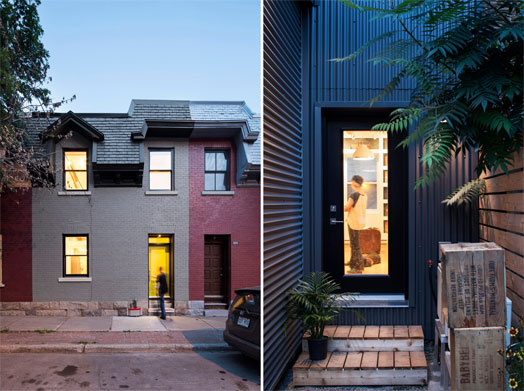 |
| . |
Sustainability continues to guide their design efforts, where demolished framing and floor boards find new life as rugged yet tasteful furniture, cabinets, and counter tops in the new home. Floors, shelving, and kitchen cabinetry are built using locally sourced Canadian plywood and along with the walls, are finished in low VOC treatments. Steel columns and beams are added to support the existing timber frame structure and left exposed and painted white; the new "bones" not only lift but gracefully compliment the old.
Pleasantly unexpected
antique finds during demolition have helped influence the design process of
various spaces throughout: old toys, antique tools, and vintage
enamel signs now play an integral part in the home's decor. “We
wanted to create a home that captured the essence and character of a classical
19th century Canadian row-house infused with contemporary touches of
playfulness and style,” say the designers.
The home utilizes natural
light extensively. Also, the building's compact size means that small amounts
of energy are required to heat or cool the interior. Consequently, all existing
doors and windows are replaced with double glazed low-E units. Besides, electric
base board and convection heaters are used at both levels. Cooling is provided
via two energy efficient (12,000 btu) interior wall-mounted inverter ducted
units. A skylight added on the second floor above the stairs, and mineral
wool insulation installed throughout the house augments the passive energy
design.

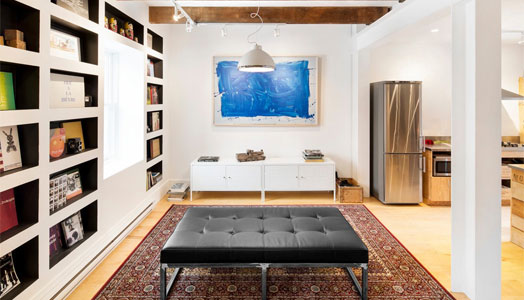
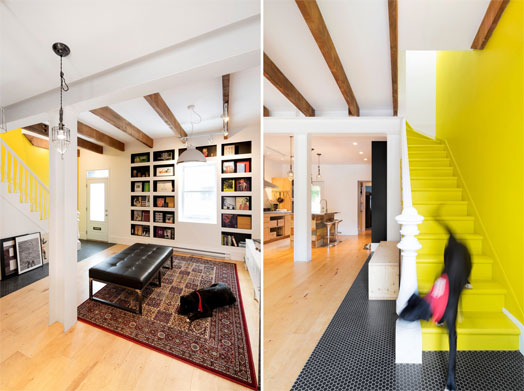
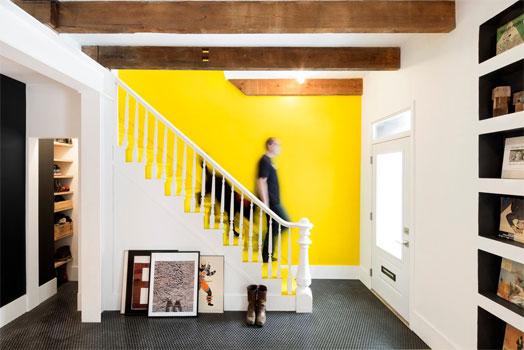
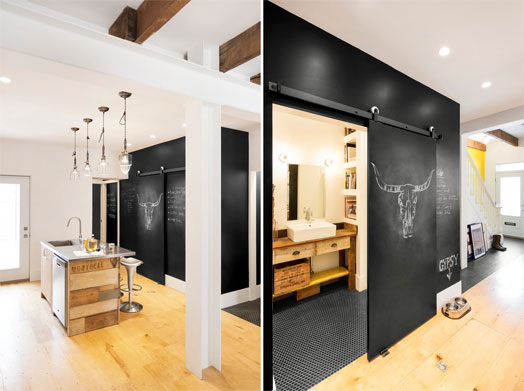
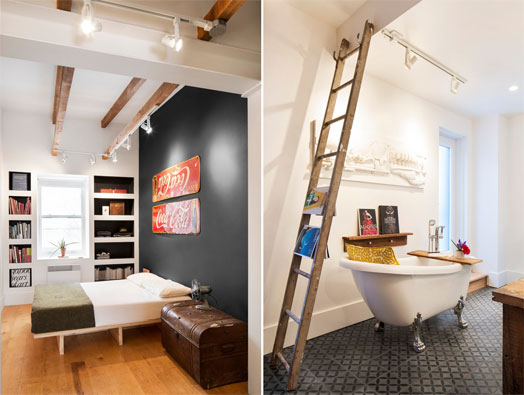
"Older buildings, those built almost any time before 1900, were designed & built with the full knowledge that energy was a scarce & expensive commodity. they were designed & built to be thermally effective, airtight, and with less glass areas (smaller windows) which were usually protected with louvre shutters. Hung wooden floors at ground level also contributed to thermal efficiency as did the tendency to use 25 mm, 1 inch, thick boarding under the roof finish. Fire places were the subject of careful attention to limit cold air ingress to the minimum. Entrance or wind, lobbies at entrances were a norm.
ReplyDeleteCareful renovation WITHOUT destroying these built-in advantages simply has to be a no brainer.
We really do need to take the ancient lessons much much more seriously.
There is a great deal for us to re-learn about designing for an energy and materials poor world, not to mention a world of dysfunctional communality.
Town Planning, Urban Design, Architecture have much to reconsider."
in response to IAnD's discussion thread "Could a sustainable renovation be the answer to old buildings instead of a redevelopment?"